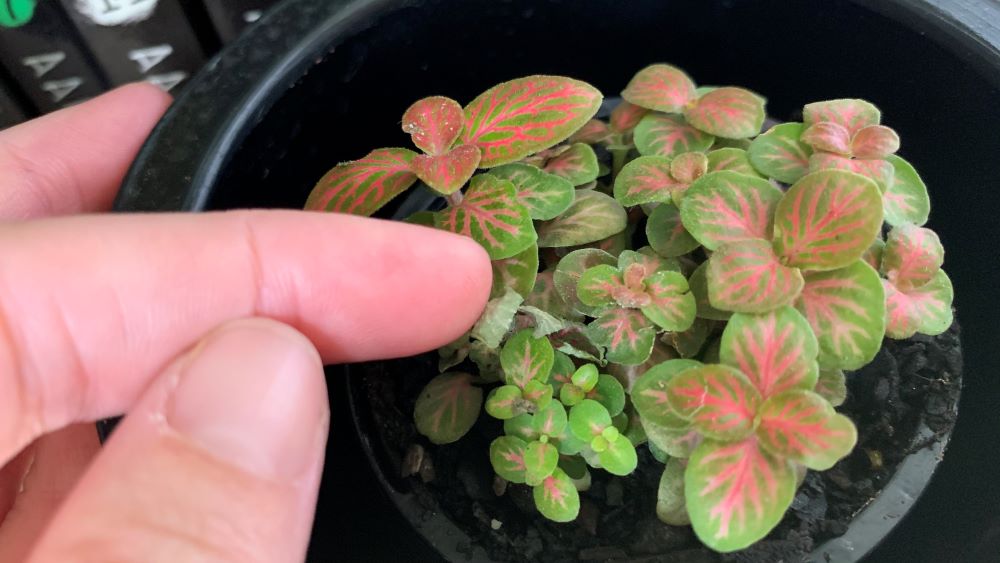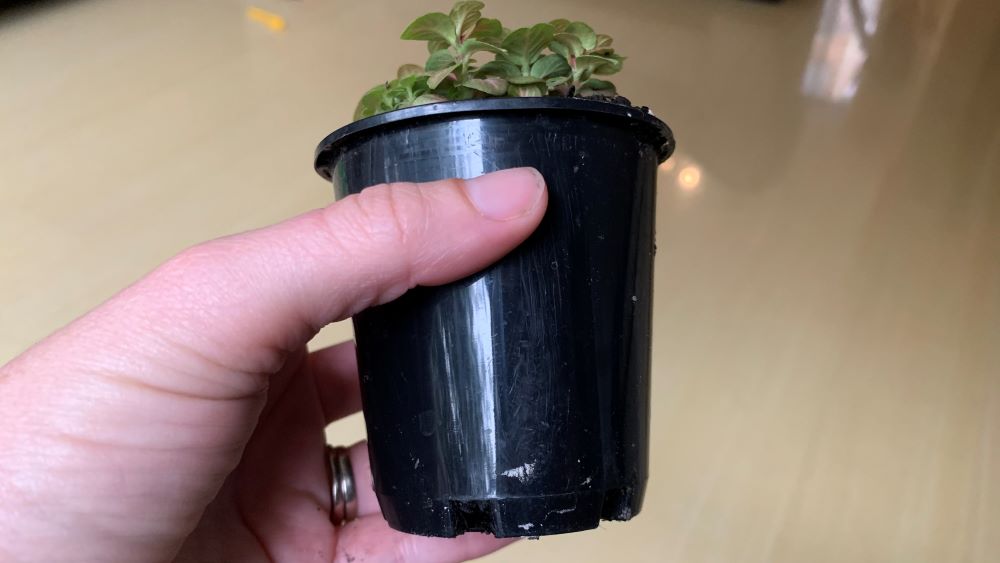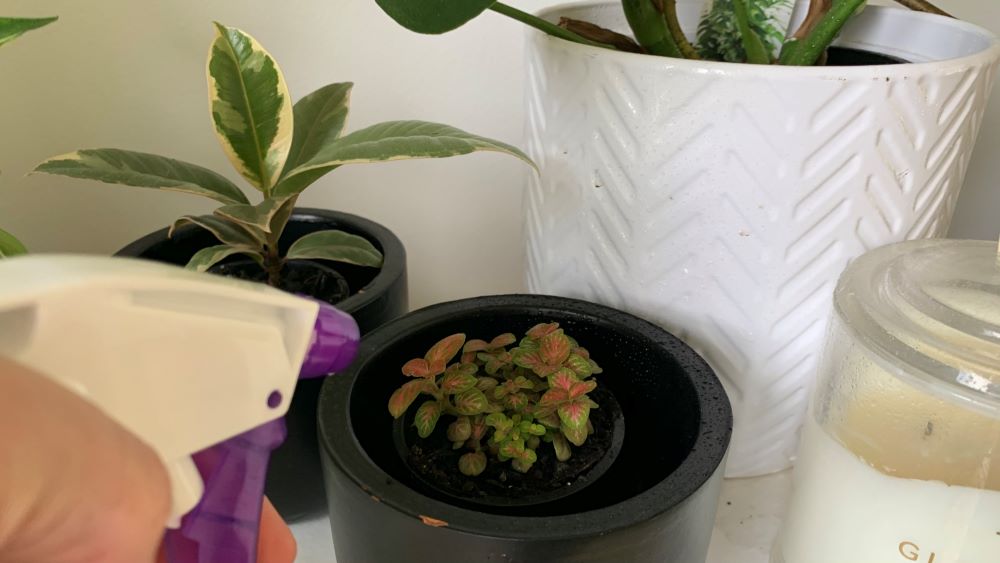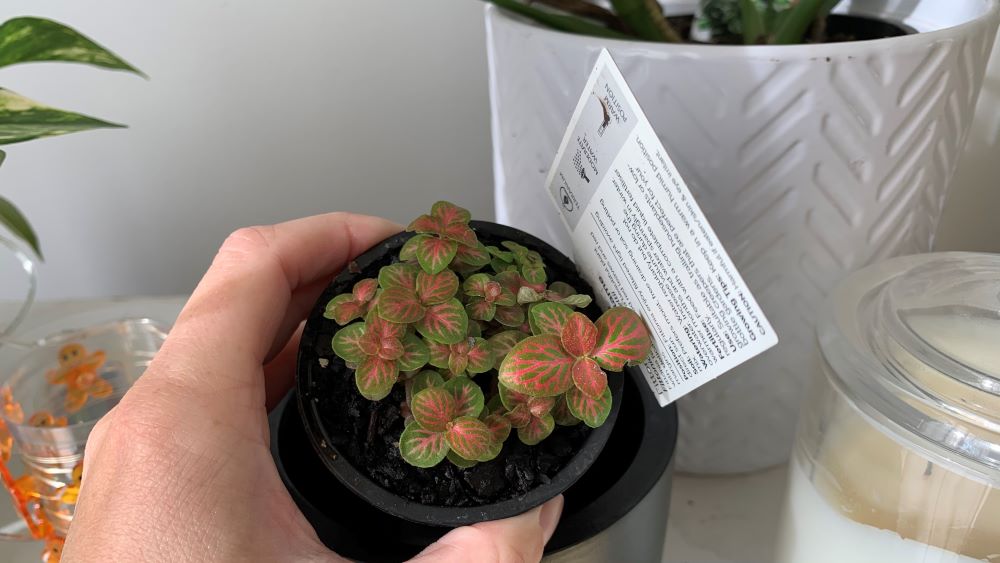The top ways to save a root bound nerve plant are to repot using good quality soil, water it regularly, add slow release fertilizer in spring and misting to increase humidity. Root bound nerve plants can show signs including leaves that are drooping, brown and crispy or if the pot feels firm with roots escaping out the bottom.
This article will explain the top 3 signs that a nerve plant is root bound and the 9 easy steps to save it.

Top 3 signs that your nerve plant is root bound
Here are the top 4 signs that can mean that your nerve plant is root bound.
1. Leaves drooping
A sign that your nerve plant is root bound is drooping leaves. Drooping leaves can be caused when the plant can’t absorb enough water. A root bound plant will run out of soil, oxygen and the plant will struggle to absorb water.
2. Curling and crispy leaves
Curling and crisping leaves are the next stage that can show the plant is not getting enough nutrients or water and may be root bound.

3. Firm pot with roots escaping
A pot that feels firm when you squeeze it can be full of roots and a sign that the plant is root bound. When the roots wrap around the base of the plant and become entangled the pot will feel firm when you squeeze it.
You can usually also see roots growing out the drainage holes out the bottom of the pot. Once they run out of room in the soil they will grow out the base.
4. Tip the plant out and have a look
The final step to figure out if your nerve plant is root bound is to inspect the roots. Gently squeeze the pot and tip the plant out to have a look at the roots. There will be minimal soil in the bottom of the pot and the roots will grow around the base of the pot in circles.
Ways to save a root bound nerve plant
Here are my top 9 ways to save a root bound nerve plant after you discover this is the problem.
1. Repotting
The best thing to do with a root bound nerve plant is to repot it. Choose a pot that is 1 size bigger which is 1 inch wider and deeper than the original pot. Gently tease out the roots and repot it using good quality potting soil.
If the plant is larger than 5 inches, you can break the plant into 2 and plant each piece into a new pot.
For a full guide on repotting nerve plants, check out my previous article: When to repot a nerve plant | 5 Key Signs

2. Regular watering
Regular watering can help your nerve plant to recover quickly after repotting. To help the root to recover water every 2-3 days to keep the soil moist.
3. Refresh the potting soil
Another way to save a root bound nerve plant is to repot it into the same pot. Tip the plant out of the pot and tease the roots out. Gently trim the excess using sharp secateurs to neaten them up and to create more space.
Clean the original pot with warm soapy water and let it dry. You can then fill the base with new potting soil and this will give the roots a boost of nutrients and more room to grow.
4. Slow release fertilizer in spring
A root bound nerve plant will recover quickly if they are given a regular dose of slow release fertilizer. Around 4 weeks after repotting, give the plant some slow release indoor plant food. Do this each year in spring and fall to give it the nutrients it needs.
5. Choose bright position out of direct sun
To help your nerve plant to recover after being rootbound find a position that is bright but out of direct sunlight. A position near a window that gets morning light but is out of direct sunlight is perfect and will give it gentle light to help it to grow well.
6. Increase the humidity
Create a microclimate using mist or a humidifier.
Another way to help nerve plants to recover is to increase the humidity around the plant. Spray it with a mist from a spray bottle, use a humidifier or place between other tropical plants indoors.

7. Seaweed solution
Seaweed solution will help your nerve plant to help the roots recover from being root bound. Seaweed is a natural root tonic that strengthens roots and stems and will help it to recover from damaged roots.

8. Liquid fertilizer to help it recover
Liquid fertilizer is another great way to help a nerve plant to recover from being root bound. A balanced liquid fertilizer for indoor plants will quickly deliver nutrients including nitrogen to encourage quick growth.
Give your plant a dose every 4 weeks in spring instead of slow release fertilizer so it can absorb the nutrients quickly.
9. Make sure it is not sitting in water
The final step to make sure your nerve plant will recover quickly from being root bound is always make sure it is not sitting in water. While a pot tray or outer pot is great for catching drips and protecting your furniture it is important the plant is not sitting in water.
Excess water can cause the delicate new roots to rot due and cause damage to the plant.

How to save a root bound nerve plant (Fittonia) | Summary
Save your root bound nerve plant by repotting it into a large pot with new potting soil or split it to make 2 new plants. Nerve plants are hardy and can tolerate root trimming to tidy them up and remove damage. Water the plant well after repotting, give it some liquid fertilizer and add some seaweed solution to strengthen the roots and stems.
Happy growing.
I am an accredited practicing dietitian, experienced gardener and a dedicated cook. I love writing and sharing my experience so you can learn from my successes and mistakes.
